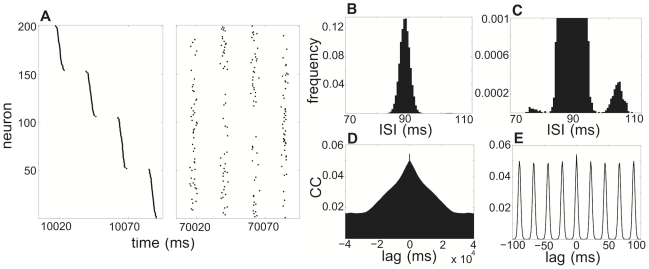Figure 2. Neurons switch clusters via cycle skipping in a network of 200 excitatory and 40 inhibitory Traub neurons.
A network of 200 excitatory and 40 inhibitory neurons with  supports four clusters here for a population rhythm of about 45 Hz. A Spike times of neurons where index is sorted according to their spike times soonest after
supports four clusters here for a population rhythm of about 45 Hz. A Spike times of neurons where index is sorted according to their spike times soonest after  . After 60 s, neurons have become thoroughly mixed with other clusters. B Histogram showing frequency of interspike interval (ISI) for all excitatory neurons in network. Large peak is just above the calcium time constant
. After 60 s, neurons have become thoroughly mixed with other clusters. B Histogram showing frequency of interspike interval (ISI) for all excitatory neurons in network. Large peak is just above the calcium time constant  , but smaller peak occurs at a higher ISI. C By zooming the scale of the frequency into
, but smaller peak occurs at a higher ISI. C By zooming the scale of the frequency into  , the small peak at larger ISIs is more visible. This suggests neurons switch clusters by skipping one cycle of the fast rhythm. D Correlation coefficient plotted over the domain of
, the small peak at larger ISIs is more visible. This suggests neurons switch clusters by skipping one cycle of the fast rhythm. D Correlation coefficient plotted over the domain of  to
to  (
( to
to  ). Over long time intervals, correlations degrade, due to noise-induced cycle skipping or (rarer) early spiking. E For a tighter lag domain,
). Over long time intervals, correlations degrade, due to noise-induced cycle skipping or (rarer) early spiking. E For a tighter lag domain,  to
to  (
( to
to  ), the ringing at discrete lag intervals due to consistent cluster time intervals is apparent. Same parameters are used here as in Fig. 1.
), the ringing at discrete lag intervals due to consistent cluster time intervals is apparent. Same parameters are used here as in Fig. 1.

